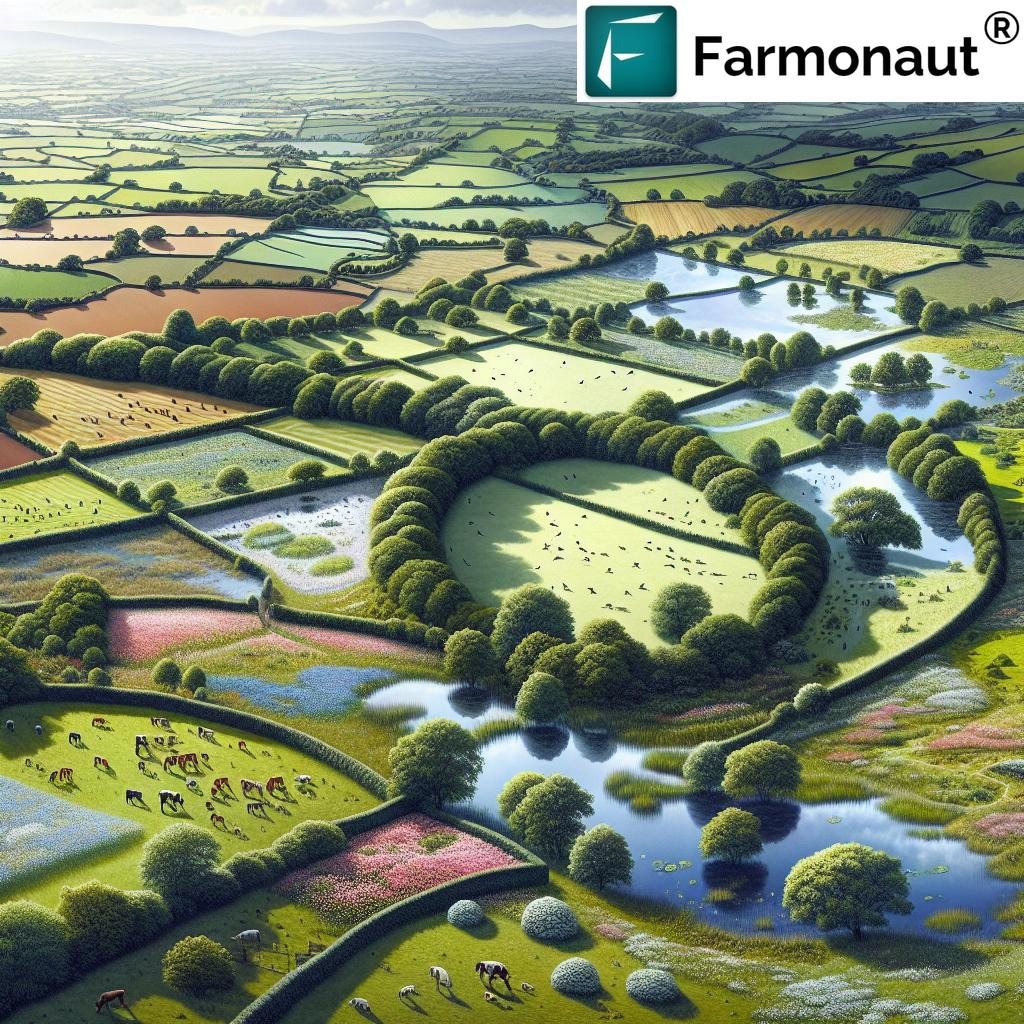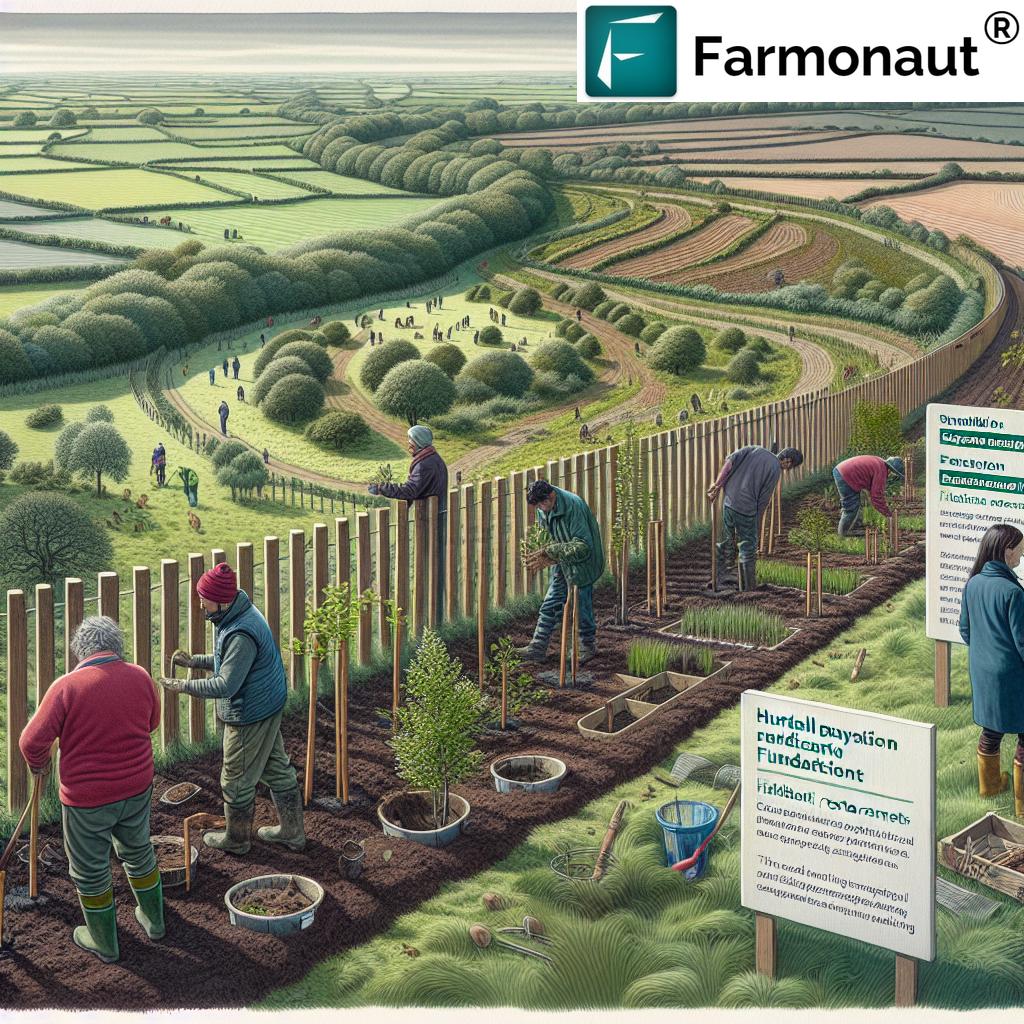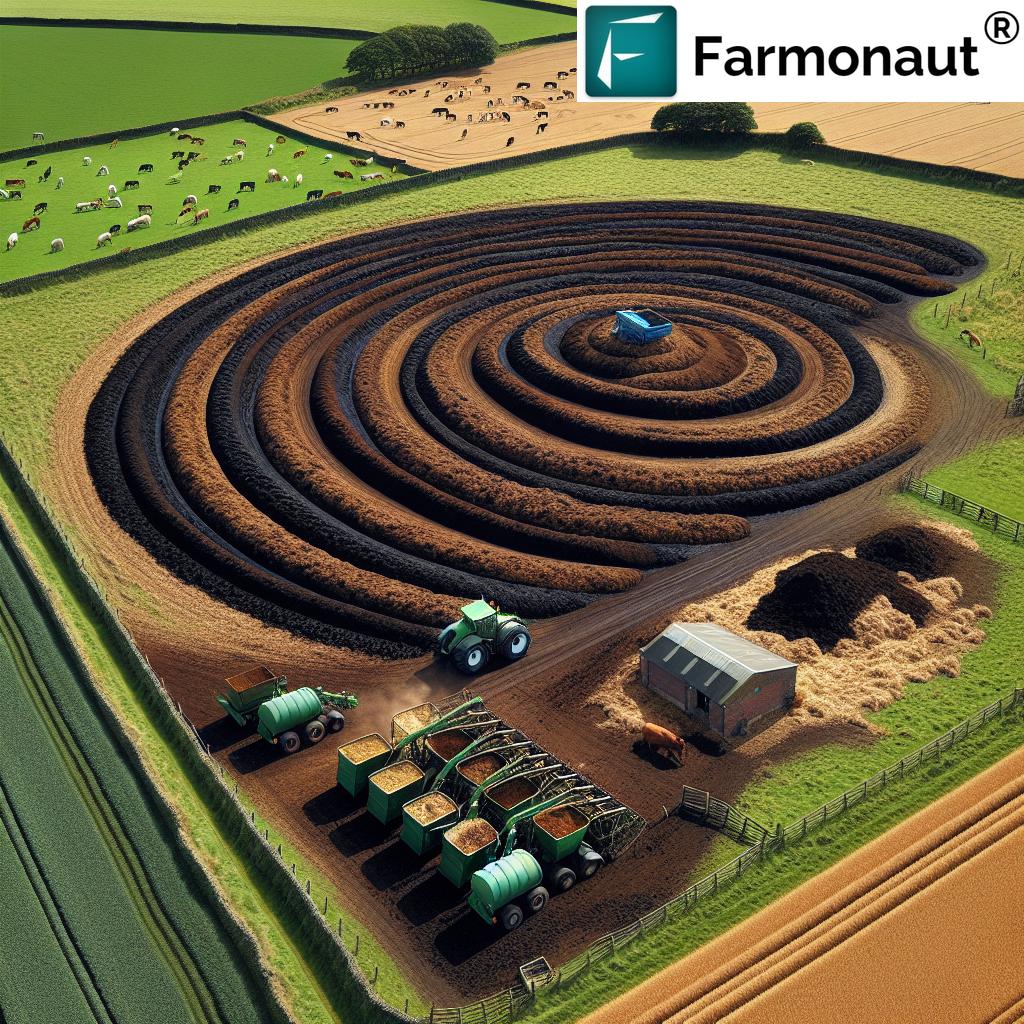“Over 30,000 English farmers participate in Countryside Stewardship schemes, promoting sustainable land management and biodiversity.”
Countryside Stewardship Schemes: 7 Funding Hacks Exposed!
- Overview of Countryside Stewardship Schemes in England
- Key Components & Options of CS Schemes
- 7 Funding Hacks for Maximizing Scheme Benefits
- Comparative Benefits Table: Choosing the Right CS Tier
- Application Process & Practical Guidance
- How Farmonaut Empowers Sustainable Land Management
- Frequently Asked Questions
- Conclusion: Building Resilient Rural Landscapes
Overview of Countryside Stewardship Schemes in England
Countryside Stewardship (CS) schemes are at the heart of England’s environmental land management strategy. These government-backed programs deliver sustainable farming incentives, funding for habitat restoration, and biodiversity enhancement practices that help landowners and managers improve the quality of water, air, and rural landscapes, while maintaining productive, resilient agriculture.
Through Countryside Stewardship, we have an unprecedented opportunity to enhance our land, protect endangered species, boost soil health, and secure the long-term viability of our farming enterprises. Involving schemes such as the Higher Tier, Mid Tier, Wildlife Offers, Woodland Support, and Capital Grants, CS programs offer financial incentives, practical support, and a clear process for making impactful changes across various land types—from arable areas to upland and lowland grazing systems.
With Countryside Stewardship, our objectives are to:
- Reward landowners for implementing sustainable practices
- Enhance biodiversity by restoring habitats and supporting wildlife
- Improve water & air quality via targeted management measures
- Add value to historical and archaeological features
- Provide capital grants for environmental improvements, including hedgerow restoration and tree planting
Let’s dive deeper into the programme’s structure and discover how to maximize the funding on offer, ensuring both environmental and financial benefits for rural England.
Key Components & Options of Countryside Stewardship Schemes
Countryside Stewardship schemes in England are structured to offer flexibility, allowing us as farmers, land managers, and landowners to select the tier and options most relevant to our specific land types, objectives, and conservation needs. Here’s an overview of the main components and their unique environmental and financial profiles.
Higher Tier (CSHT): Focus on Priority Habitats and Sites
The Higher Tier is designed for the most environmentally significant sites in England. It prioritizes the protection, restoration, and enhancement of priority habitats, species, and public benefits such as clean water, air, and historic landscapes. Applicants receive comprehensive support and guidance for complex projects, often involving biodiversity enhancement practices, flood risk reduction measures, and carbon capture activities. This tier is ideal for managers focused on ambitious, large-scale conservation objectives.
Mid Tier: Versatile Options for Varied Land Types
The Mid Tier provides a broad range of options suited to various types of land—from arable to upland, lowland grazing, and mixed farming landscapes. It is the most popular scheme among farmers seeking to implement a combination of environmental management practices and funding support. Notable options include:
- AB1 (Nectar Flower Mix): Boosting resources for pollinators
- AB8 (Flower-rich Margins and Plots): Establishing flower-rich areas for pollinators and wildlife
- AB9 (Winter Bird Food): Ensuring food supplies for farmland birds during critical winter months
Wildlife Offers: Fast-Track Biodiversity Gains
Built for arable, upland, lowland grazing, and mixed systems, Wildlife Offers streamline the application process for common biodiversity actions, such as creating wildlife corridors, food plots, and nectar-rich margins. Ideal for rapid enhancement of farmland habitats.
Woodland Support: Funding for Woodland Managers
This component focuses on woodland management support—from protection of existing woodlands to the creation of new woodland areas. It includes planning grants, establishment payments, and maintenance incentives for landowners wishing to embrace sustainable forestry and increase public benefit.
Capital Grants: Investment in Environmental Works
Capital grants for landowners provide targeted funding for environmental improvements. Popular measures include hedgerow planting (BN11), fencing (FG1), tree planting, and innovative flood management works—such as installing leaky dams. These one-off grants are often combined with wider Mid Tier or Higher Tier agreements.
Each scheme option is designed to maximize environmental benefits—by improving soil health, increasing carbon capture, enhancing water and air quality, and ensuring the protection of our unique rural landscapes for future generations.
“Countryside Stewardship offers up to 70% funding for environmental improvements, supporting eco-friendly farming across England.”
7 Funding Hacks for Countryside Stewardship Schemes
We can dramatically increase the effectiveness of our Countryside Stewardship applications—and our associated financial incentives—with a few strategic moves. Here are 7 proven hacks to help us unlock the full potential of CS funding and environmental land management support:
-
Pinpoint the Right Tier for Your Land
Assessment and selection are crucial: Target Mid Tier if your land has mixed uses, Wildlife Offers for fast-track biodiversity support, and Higher Tier for priority habitats or large-scale restoration. Use the official guidance to match scheme objectives with your current management. -
Stack Payment Options for Cumulative Benefit
Many scheme options can be combined. For example, capital grants for hedgerow planting can be layered with annual revenue payments for management. Assess eligibility to secure both one-off and ongoing funding. -
Leverage New Premium Payments
As of 2024, premium payments reward high-impact actions: e.g., £765 per hectare for lapwing nesting plots or £1,242 per hectare for river-floodplain connectivity. Review the latest payment rates for maximum returns. -
Choose High-Demand Biodiversity Actions
Options such as AB1 (Nectar Flower Mix), AB8 (Flower-Rich Margins and Plots), and AB9 (Winter Bird Food) are not only favored by application panels but deliver measurable biodiversity enhancement for pollinators, birds, and priority species. -
Optimize Application Timing and Completeness
Deadlines and documentation are strict. Start early, use free pre-application advice from Natural England, and ensure all maps, evidence, and supporting information are complete for faster approval. -
Integrate with Other Environmental Land Management Schemes
The 2024 SFI and CS Mid Tier now share a single application process (rural payments application). Use this integration to minimize admin, avoid duplication, and unlock additional farmers grants in England. -
Prioritize Permanent Features and Public Goods
Actions that protect or restore existing hedgerows, woodlands, peatlands, or wetlands are favored, providing higher returns for ongoing management and delivering wider public environmental benefits.
Comparative Benefits Table: Choosing the Right Countryside Stewardship Tier
| Scheme Name | Estimated Funding per Hectare (£) | Main Eligibility Criteria | Sustainability Focus | Biodiversity Enhancement Estimate |
|---|---|---|---|---|
| Higher Tier | £600–£1,242* | Environmentally significant sites, priority habitats, SSSIs, wetlands, historic features | Water quality, flood risk, carbon capture, site restoration | 35–100 priority species (varies based on selected actions) |
| Mid Tier | £180–£765* | Arable, grassland, mixed, upland, lowland grazing, basic eligibility | Soil health, resource protection, pollinator support | 20–70 beneficial species (birds, pollinators, mammals) |
| Wildlife Offers | £120–£450 | Hectare-based arable, upland, lowland, and mixed | Biodiversity corridors, food resources, quick habitat win | 10–30 species (hedgerow birds, invertebrates, bats) |
| Woodland Support | £200–£800* | Existing/new woodland, minimum area, management plan required | Woodland creation, carbon sequestration, local air/water quality | Uplift in woodland bird, mammal, and plant species richness |
| Capital Grants | £40–£600 (one-off) | Landowners, managers, multiple environmental improvement options | Hedgerow, boundary restoration, flood measures | Enhances corridors for pollinators, birds; supports 15–40 species |
*Figures are indicative and subject to change based on recent payment increases and specific actions chosen. Premium payments for certain restoration activities may be even higher. Always check the latest rural payments application guidance.
Application Process & Practical Guidance for Countryside Stewardship
Winning funding and environmental land management support is a matter of clear planning, eligible land, and detailed evidence. Here’s how we can make the CS application process work for us:
- Eligibility Check: Confirm our land blocks against scheme maps and ensure alignment with Countryside Stewardship rules for the selected component.
- Pre-Application Advice: Seek tailored advice from Natural England or the Forestry Commission, focusing on the best environmental improvements for your holding.
- Submit via Rural Payments Application System: Use the digital portal for streamlined, secure, and trackable submissions. Combined SFI and CS Mid Tier applications are now available—ensuring more efficient processes for farmers and landowners.
- Agreement & Delivery: Once approved, follow all guidelines, document progress (photos, maps, monitoring records), and make timely claims for payments.
- Implementation & Monitoring: Stay compliant with scheme rules, environmental management targets, and evidence requirements—this ensures future eligibility for new grants and avoids clawbacks.
Always check the latest guidance for England and consult local advisors as necessary. The right approach delivers lasting environmental benefits, supports sustainable agriculture, and maximizes rural financial incentives.
How Farmonaut Empowers Sustainable Land Management for Countryside Stewardship Schemes
Precision and real-time insights can make all the difference when managing actions required by Countryside Stewardship schemes. That’s where Farmonaut steps in.
Farmonaut: Affordable Satellite-Driven Farm Management
Farmonaut is pioneering a new era of large-scale farm management by empowering us with advanced satellite imagery, AI-driven monitoring, and actionable advisory tools—all accessible through Android, iOS, and web/browser apps. Our decision-making instantly improves, ensuring every practice aligns with CS scheme requirements and wider environmental land management objectives.
- Satellite-based crop health monitoring enables precise tracking of NDVI, soil moisture, and vegetation status, supporting evidence for CS actions.
- Jeevn AI Advisory delivers tailored, real-time advice for climate, resource use, and best-practice management—maximizing efficiency in eligible areas and actions.
- AI-powered anomaly detection spots pest and disease events early, aiding in the implementation of sustainable practices required by CS agreements.
- Blockchain traceability (explore traceability) ensures that proof of sustainable farming and land management can be transparently shared with customers, certifiers, and agencies.
- Fleet and resource management (fleet management) tools lower operational costs by optimizing vehicles, workforce, and machinery for larger stewardship projects.
- Carbon footprint tracking (use case) lets us quantify and evidence environmental benefits, which is increasingly valuable for scheme applications requiring carbon reduction data.
- Direct API access (API link, developer docs) provides farm records, monitoring, and custom reporting to land managers, advisors, and researchers.
Combined, these features allow us to implement, monitor, and report on all actions needed for maximum Countryside Stewardship and Environmental Land Management scheme success—all from a single platform.
And for those managing forestry, tree, and plantation projects for woodland support or restoration, explore Farmonaut’s crop plantation and forest advisory services for unparalleled analytics on tree health, density, and plot management.
Frequently Asked Questions: Countryside Stewardship Schemes & Funding
What is the main aim of Countryside Stewardship schemes?
The main objective is to support sustainable land management, habitat restoration, and biodiversity enhancement in England by providing financial incentives to farmers, landowners, and land managers for adopting environmental practices and protecting natural resources.
How do I know which Countryside Stewardship tier is right for my land?
Analyze your land’s characteristics (e.g., priority habitats, woodland, grassland, or arable). Use Mid Tier for versatile options, Higher Tier for significant sites or complex projects, and Wildlife Offers for rapid biodiversity gains. Government guidance and local advisors offer personalized recommendations.
What are the main environmental and public benefits of participating?
Benefits include improved water and air quality, increased carbon capture, reduced flooding risks, enhanced wildlife and pollinator habitats, and strengthened historical and archaeological feature protection.
What is the application process for Countryside Stewardship schemes?
Ensure eligibility, seek pre-application advice, submit your proposal through the rural payments application system, and implement agreed actions. Adhere to deadlines and submit complete, accurate information for the fastest approval.
How can Farmonaut help me achieve compliance and optimize scheme benefits?
Farmonaut’s satellite-based monitoring, AI advisory, and resource management tools help track land conditions, optimize management practices, and automate records for compliance and reporting—supporting the delivery and validation of CS actions.
Conclusion: Building Resilient Rural Landscapes with Countryside Stewardship
Collaboratively, we can transform our approach to land management, conservation, and agricultural productivity through Countryside Stewardship schemes. By choosing the right funding options, leveraging new payment opportunities, and harnessing technology like Farmonaut for monitoring and compliance, we set the stage for a more sustainable, biodiverse, and profitable future for rural England.
Let’s ensure our farms and landscapes deliver public benefits, support wildlife, and remain productive for future generations—while capitalizing on the broad range of financial incentives and environmental support available today.



















Your ability to simplify complex ideas without diluting their essence is a rare talent. Keep sharing your knowledge with the world.